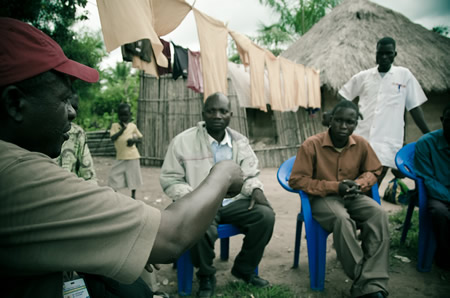ABC para gerentes que lideran: D es para decidir

As an effective “Manager who Leads,” regardless of your position in an organization, you must make decisions all the time. They come in many flavors and sizes:
- small decisions, that affect only yourself and/or a few people,
- big decisions with huge consequences,
- practical decisions that keep things moving,
- ethical decisions to maintain standards of good governance,
- and many more.
Some of these decisions are easy to make and people will be grateful to you. Other may require much soul searching and anguish, and leave people angry, especially at you.
When you have time, and the decision is important and relevant information can be obtained, you may be able to use techniques of rational decision making such as:
- cost benefit analyses
- priority matrices
- decision trees
- Pareto analyses
All of these, y más, are well documented and explained on the internet. A good source of information about these tools is the Mindtools sitio web.
Difficult decisions to make are those where you cannot know all the consequences until much later (or possibly ever!). Or those where you need more information or more input but there is no time. Make sure you involve others, to make sure the decision you finally make is as good as it can be.
Some decisions you have to make ‘in the heat of the moment,’ such as in an emergency. When asked how firemen or rescuers make their split-second decisions, they often claim it was intuition, or may be even extrasensory perception (ESP). We now know that in such cases experienced people recognize patterns quickly and run scenarios through their head. They may not always be right, but people without much experience are at a disadvantage because there is no time to compare options and use any of the rational decision making techniques they may have been taught.
Remember that whatever you decide you will have to live with the consequences and accept responsibilities. American President Truman (1884-1972) had a sign on his desk that said “the buck stops here.” It comes from the expression “pass the buck” which means passing the responsibility on to someone else. This is one of the less glamorous sides of being ‘a manager who leads.’
Deciding well
When it is not clear who has the authority to make a decision, chances are that the decision will not be made, or if made by the wrong person, challenged. So make sure that people are clear who decides when a decision is due.
We have an expression in the US that “two heads are better than one.” Checking in with your staff or peers, especially if they are mature, experienced and knowledgeable, allows you to think more broadly about the impact of a decision. or they may help you see options you had not considered. If the decision affects others, find out more about how so you can use that information as input. The fact is that there are very few decisions (in life and at work) that should be made without consulting or coordinating with others, except maybe by chess players and dictators.
When standing at a decision point always ask yourself the following questions: What is my goal? What is this decision supposed to accomplish? The clearer you are about this the better.
Involve others to clarify your thinking, then select the criteria to guide the decision making process.
Recognize your preferences when it comes to seeking information: some people never have enough while others rush to decision prematurely.
Waiting for the right decision to emerge from analyzing the data can lead to “analysis paralysis.” Not making a decision in time is also a decision.
Emotions play a very big role in decision making. Por ejemplo, fear or the anticipation of a possible negative consequence is generally a bad guide for action. Seeking to avoid something makes it hard to be creative or see new possibilities.
Confidence matters. It is true that confidence about whether a decision is the right one or not may have no relation to the quality of the decision. But we do know that decisions that are communicated with much confidence are more likely to be followed than decisions communicated with hesitance. (see YouTube video of lecture by Professor Baba Shiv below)
Test how implementable your decision is. It may look good on paper, but can it be done?
See for yourself
- Data and Evidence: Peter Piot speaks about evidence in decision making
- Brain Research at Stanford: Toma de Decisiones: – a seven and a half minute video of a lecture at Stanford University by Professor Baba Shiv about the role of confidence in communicating decisions.
- Daniel Kahneman: “Thinking, Fast and Slow”– a very interesting one hour lecture by Daniel Kahnemann (author of Thinking Fast and Slow) at Google. Kahnemann received the 2002 Nobel Memorial Prize in Economic Sciences. His empirical findings challenge the assumption of human rationality prevailing in modern economic theory.






Respuestas